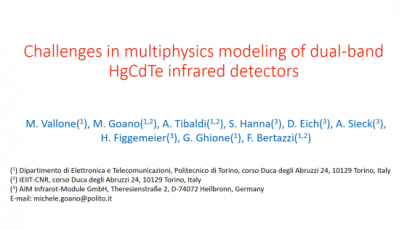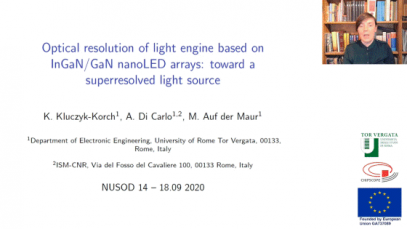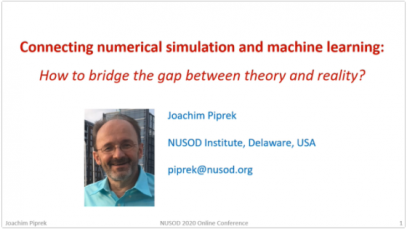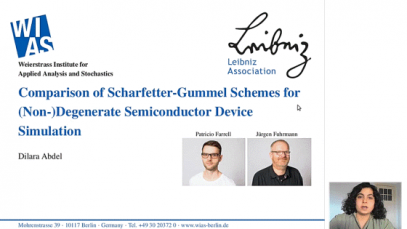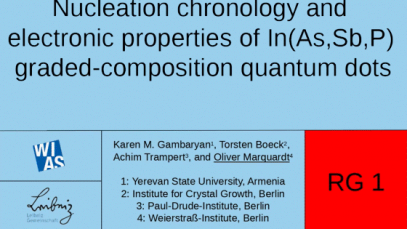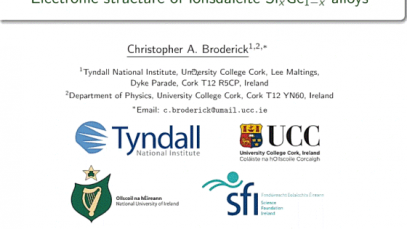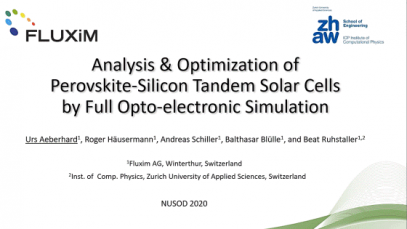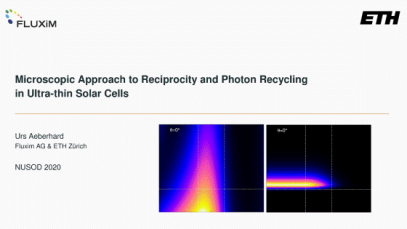Top 10 paper submissions
D01–Challenges in multiphysics modeling of dual-band HgCdTe infrared detectors
We present three-dimensional simulations of HgCdTe-based focal plane arrays (FPAs) with two-color and dual-band sequential infrared pixels having realistic truncated-pyramid shape taking into account the presence of compositionally-graded transition layers. Simulations emphasize the importance of a full-wave approach to the electromagnetic problem, and the evaluations of the optical and diffusive contribution to inter-pixel crosstalk indicate […]
IS02–Shape Optimized Photonic Integrated Circuit for Optical Computing Applications
Shape optimization techniques were quite recently applied to photonic components but to the best of our knowledge, no application to optical computing has been reported yet. Here, we present the design of a photonic integrated circuit, composed of shape optimized passive components, performing a matrix-vector product. A ≈ 2000 times gain on the overall footprint […]
LD01–Third Order Dispersion in Optical Time Delayed Systems: The case of Mode-Locked Vertical External-Cavity Surface-Emitting Lasers
Time-delayed dynamical systems materialize in situations where distant, point-wise, nonlinear nodes exchange information that propagates at a finite speed. However, they are considered devoid of dispersive effects, which are known to play a leading role in pattern formation and wave dynamics. We show how dispersion may appear naturally in delayed systems and we exemplify our […]
LED01–Optical resolution of light engine based on InGaN/GaN nanoLED arrays: toward a superresolved light source
We present the optical simulations of a novel illumination source based on nanoLED arrays for the possible application in superresolved microscopy. We are simulating the images of various gold nanoparticle arrangements collected by the proposed nanoillumination microscope. The images are then analysed in order to understand the capabilities and limitations of the microscope.
MM02–Connecting numerical simulation and machine learning: How to bridge the gap between theory and reality?
Machine learning and numerical simulation represent opposite approaches to computational analysis of the real world, inductive vs. deductive. However, both methods suffer from various uncertainties and even their combination often fails to link theory and reality. This paper presents a critical review of such connections and proposes improvement options for optoelectronic devices.
MM03–Comparison of Scharfetter-Gummel Schemes for (Non-)Degenerate Semiconductor Device Simulation
We consider Voronoi finite volume schemes for the discretization of the van Roosbroeck system and pay particular attention to the choice of flux approximations. The classical Scharfetter-Gummel scheme yields a thermodynamically consistent numerical flux, but cannot be used for general charge carrier statistics.We compare and analyze aspects of two state-of-the-art modified Scharfetter-Gummel schemes to simulate […]
N02–Nucleation chronology and electronic properties of In(As,Sb,P) graded-composition quantum dots
We have studied nucleation process and electronic properties of graded-composition quantum dots(GCQDs) grown from In-As-Sb-P in the liquid phase for application in mid-infrared devices like photoresistors or photoconductive cells. The GCQD ensemble exhibits diameters of 10 – 120 nm and heights of 2 – 20 nm. Compositional grading is a typical feature of quantum dots […]
NM02–Electronic structure of lonsdaleite SiGe alloys
Conventional diamond-structured silicon (Si) and germanium (Ge) possess indirect fundamental band gaps, limiting their potential for applications in light-emitting devices. However, SixGe1-x alloys grown in the lonsdaleite (“hexagonal diamond”) phase have recently emerged as a promising direct gap, Si-compatible material system, with experimental measurements demonstrating strong room temperature photoluminescence. When grown in the lonsdaleite phase, […]
SC02–Analysis and optimization of perovskite-silicon tandem solar cells by full opto-electronic simulation
We present a comprehensive opto-electronic simulation framework for the computational analysis and optimization of perovskite-silicon tandem solar cells, consisting of a combination of a multiscale optical model for the simultaneous consideration of interference in thin coatings and scattering at textured interfaces with a mixed electronic-ionic drift-diffusion transport model that captures the peculiarities of the geometries […]
SC03–Microscopic approach to reciprocity and photon recycling in ultrathin solar cells
In contrast to their bulk counterparts, ultrathin solar cells exhibit bias-dependent optical properties. This has severe implications for the validity of conventional opto-electronic reciprocity relations. We review the predictions of this phenomenon from quantum-kinetic theory and discuss the experimental confirmation, as well as the extension of the theoretical framework for the rigorous assessment of photon […]

